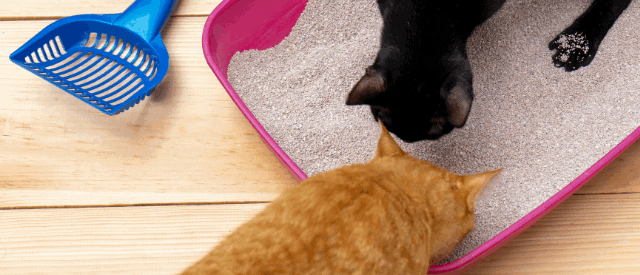Does your cat have litter box issues, or are you getting a new kitten? If you answered “Yes” to either question then this article on litter box training is for you.
Kittens are CopyCats, they learn from each other!
It’s amazing that kittens are as clean as they are. Contrast a kitten with a puppy of the same age and you’ll soon realize our feline friends are a lot quicker to learn where the toilet is. This is because they learn by watching their mother and copying each other.
For those fortunate enough to experience the joy of a litter of kittens in the house, you can expect the Mama cat to do the bulk of the toilet training. All you need do is give her the right tools to teach her kittens, and then sit back with a coffee and enjoy their antics.
All you need to provide them is a large litter box with low sides that contains plenty of non-clumping cat litter.
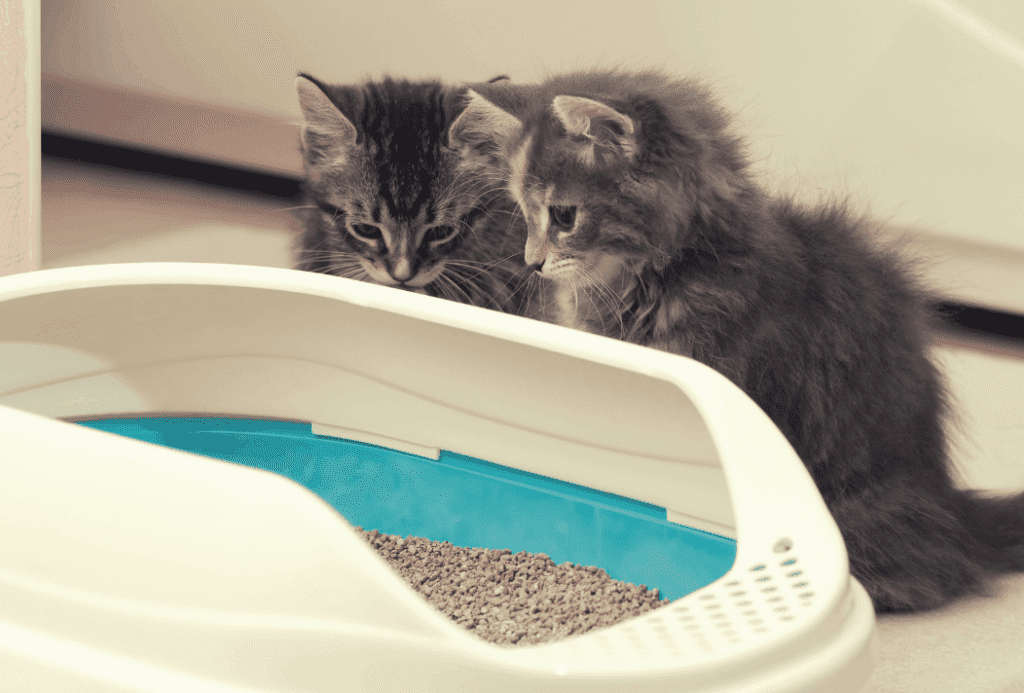
Health Tip Use non-clumping litter for kittens as they will investigate it with their mouths. When swallowed, clumping cat litter could cause a gut blockage.
For tiny kittens, lie a book beside the tray to act as a step to help them get in and out.
Locate the tray in a quiet corner of the room, but well away from their food and water. Hopefully Mama Cat will pop in to do her business, with the kittens hot on her heels. Then they watch, learn, and copy.
Training Tip Scent markers from pee and poop help attract the kittens to the tray. Whilst the tray should be kept clean, don’t swoop straight in but wait a few hours before spot-cleaning. This helps the youngsters get a stronger sense of what is a toilet area and what isn’t.
Homing a cat and teaching good litter box habits
What do you do when bringing a kitten or new cat home?
Help matters along with a little forethought and planning. This applies equally to homing an adult cat as well as a kitten.
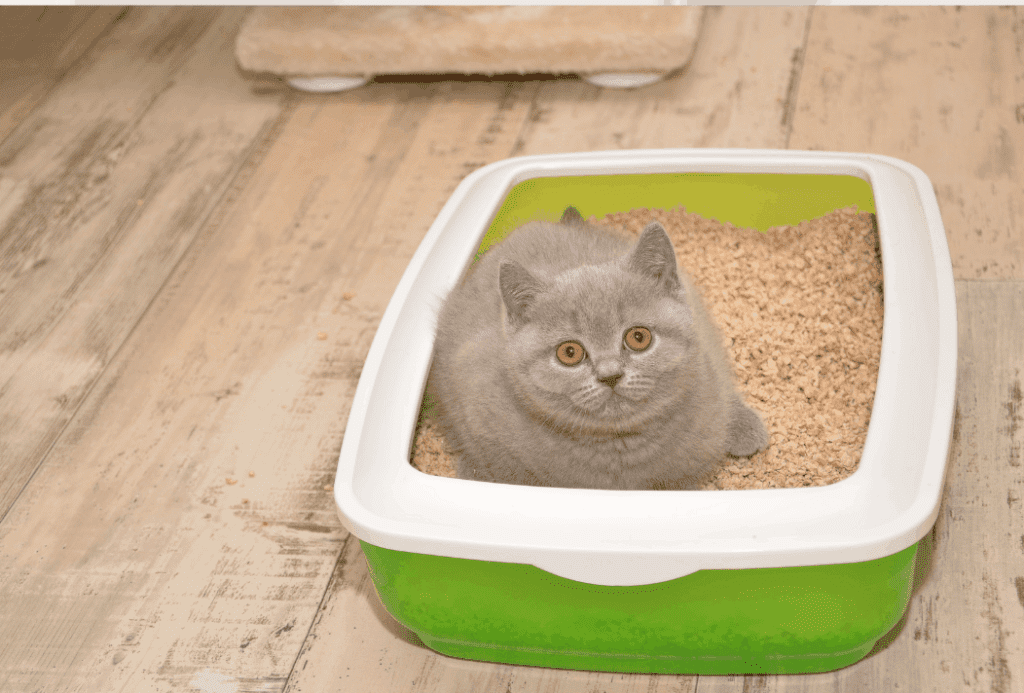
The first thing is to find out from the rescue or breeder what type of cat litter the kitten is used to. Be specific. For example, if they use a clay-based litter find out what the brand is. This is because cats are creatures of habit and far more likely to toilet in the right place when they recognize the substrate. Go with this for now…you can always change litter further down the line.
The other important point is to introduce the cat to one room at a time. Set up one room as the cat’s starter home, complete with food, water, bed, hiding place, scratch post, toys, and litter tray. By introducing a limited world, the cat will find her paws more quickly. Then once she is confidently coming out to say, “Hello” you can expand her horizons.
Training Tip You wouldn’t want to eat dinner sitting beside a toilet, and neither does your cat. Put food and water bowls on the opposite side of the room to the tray.
Training Tip Show the cat where the tray is, and make gentle digging motions in the clean litter to help the penny to drop.
The Paw-Fect litter box location
Some cats take to a litter box, no problems. Others are a bit shy; in which case you can encourage them by putting the litter box where they feel safe.
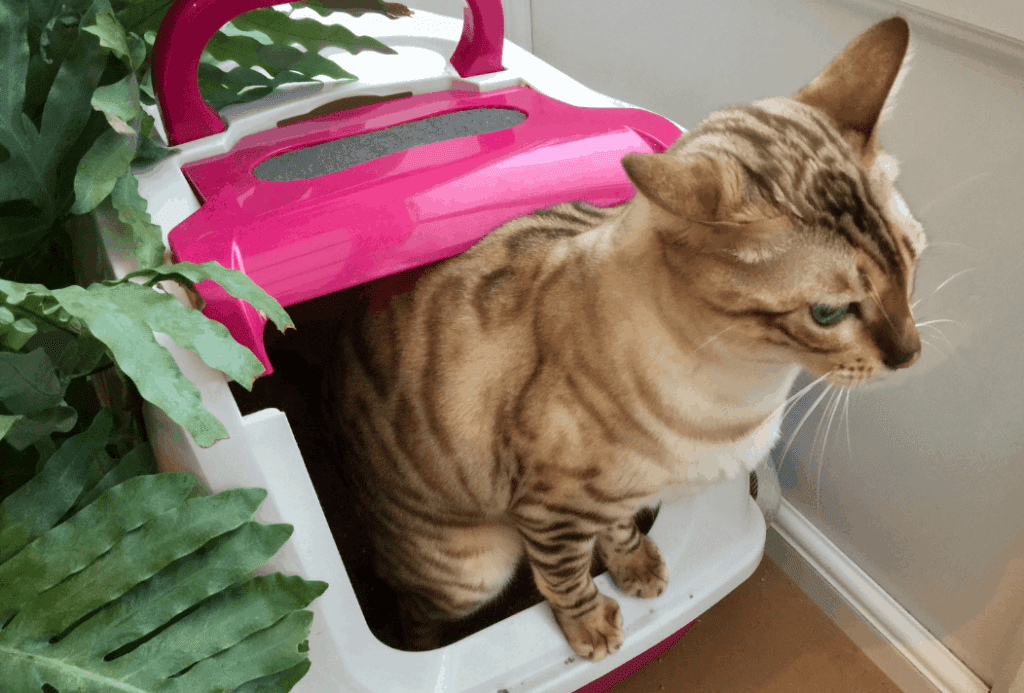
Our suggestions include:
- Choose a quiet spot, where the cat won’t be disturbed about her business
- The corner of a room is good, as she doesn’t have to ‘watch her back’ which adds a sense of security
- Keep the tray away from cat flaps or doors, where another cat could make an entrance and surprise her
- Avoid places where something could suddenly startle the cat, such as a laundry room beside a washer that suddenly goes into spin cycle
Litter box do’s and don’ts
To help avoid making accidental mistakes, here are some dos and don’ts.
- DON’T suddenly change cat litter
- DO gradually transition from one cat litter type to another by mixing the two together
- DON’T suddenly change tray location
- DO slowly move the original tray inch by inch, whilst adding a new tray in the desired spot
- DON’T forget to scoop daily to keep the tray clean
- DO totally empty the tray and disinfect it at least once a week
- DON’T use tray liners. Most cats dislike the feel under their paws
- DO offer a choice of trays (hooded or open) to see which the cat prefers
- DON’T line several trays up in a row, but place that at different locations. This prevents a bossy cat dominating the toilet area
Training Tip In a multi-cat household the golden rule for the number of trays is a minimum of: One tray per cat plus one spare tray. So for two cats this means three trays; four cats, five trays; and so on.
Trouble-shooting Toilet Problems
From the cat that toilets outside the box to those that deliberately scent mark, things can go wrong. Here’s what to do about it.
Never Punish
First out, frustrating as inappropriate toileting is, never punish. This stresses the cat and since stress is a major cause of territory marking, it makes matters worse. Instead, grit your teeth, clean up the mess, and address the underlying cause.
Behavioral vs Medical?
First, it’s important to work out if the cat has a medical problem. A cat with a sense of urgency to toilet may not make it to the tray. Problems such as FLUTD (feline lower urinary tract disease) or diarrhea make for accidents. These require veterinary treatment to clear up the health problem before a bad toilet habit becomes established.
Signs of a medical problem include:
- Repeated squatting
- Squatting for a long time,
- Crying while toileting
- Excessive bottom licking
- Blood stained urine
- Soft or runny feces
If you see any of the above signs then a vet checkup is essential. Alternatively, some cats spritz their urine over vertical surfaces, which flags up a behavioral cause.
The division between a health and behavioral issue is not always clear
If this is the case, think if anything has changed recently to upset the cat. This can be anything such as a change of routine, the arrival of a new pet or baby, moving house, a stray in the garden, a change of litter substrate…
The key to correcting the problem is working out what the underlying cause is, and making things favorable again. Let’s look at some examples and see if you can work out the cause, effect, and solution.
The Laundry
Problem: The cat uses the tray in the laundry room no problem, but suddenly starts peeing in the wrong place. Why?
Solution: In this scenario, the cat was using the tray when the washer went into a spin cycle, frightening the cat. She now associates the tray with danger and avoids it. The answer is to relocate the tray to a quieter spot
Cystitis
Problem: The cat had an episode of cystitis, which has now cleared up but she still won’t use the tray. Why?
Solution: She experienced discomfort passing urine on the tray, and now links the tray in her mind with pain and so avoids it. This is one of the rare occasions when a change of substrate is a good idea, to one that holds no association between toileting and pain.
Multicat household
Problem: You have three cats and four trays in the house. One cat refuses to use a tray at all. Why?
Answer: Whilst you have the right number of trays, they are lined up close together. This facilitates a bully cat terrorizing a more submissive cat when she wants to use the tray, meaning the shy cat goes elsewhere to relieve herself.
Nothing is working!
Problem: You sorted out the underlying problem and STILL the cat toilets in the wrong place. Why?
Answer: The urine smell in the carpet signals that this is a toilet spot and so the cat keeps returning.
This last point reminds us that it’s also necessary to ‘unmark’ the places where the cat previously toileted, in order to stop them returning. Let’s look at this in more detail.
Prevent repeat offending
Getting rid of urine markers is essential to prevent repeat offending. Unfortunately many household cleaners contain bleach or ammonia, which are components of urine and feces. Thus, you may accidentally add to the problem, not solve it.
The best recipe for deodorization
Note: Always test an inconspicuous area first to ensure the carpet or soft furnishing is color fast.
- Blot up any wetness with disposable paper
- Wash well with a solution of biological washing detergent
- Rinse well with clean water and blot dry
- Wash again with a solution of bicarbonate of soda
- Rinse well and blot dry
Deodorization takes time. You need to do this daily for at least two to three weeks AFTER the cat last toileted in that spot. It’s a big ask, but necessary to completely get rid of those scent markers!
Other tactics you can try
- Relocate food bowls to the scene of the crime, as cats are less likely to soil where they eat
- Cover the spot with silver foil
- Place a plastic carpet protector with knobbly side up, over the area
- Try using a synthetic feline pheromone such as Feliway, to spread contentment and a sense of security. This helps reassure your cat all is well with the world, reduce stress, and the urge to toilet where she shouldn’t
Remember most cats are rational creatures and if you have a house soiling problem, there’s likely to be a reason! Seek out that reason, correct it, banish odors…and all will be well.
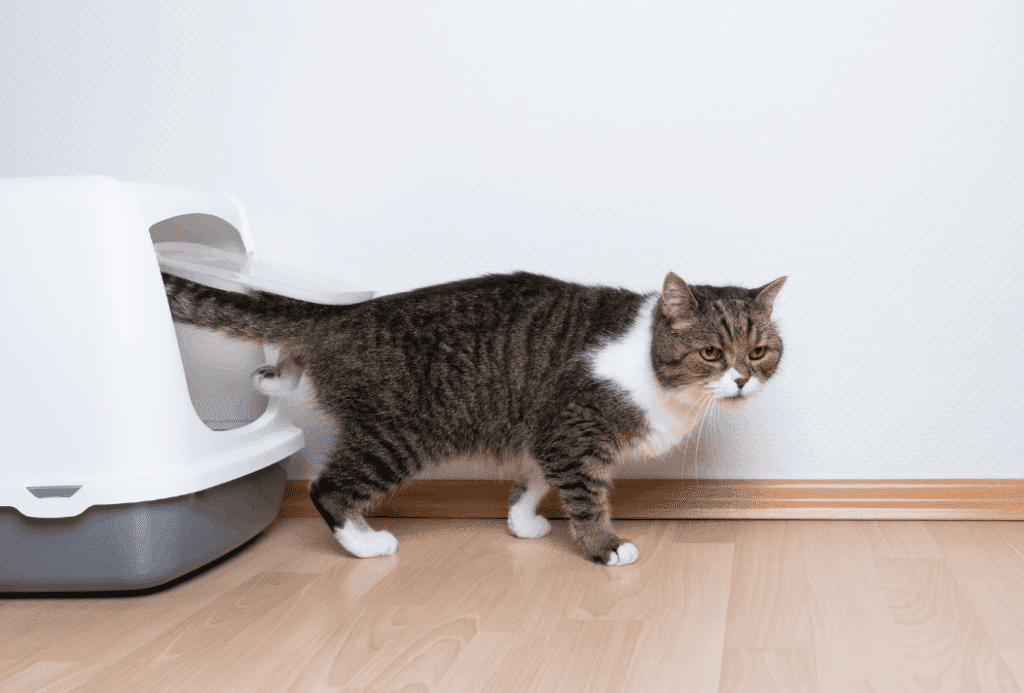
Happy litter box training!



